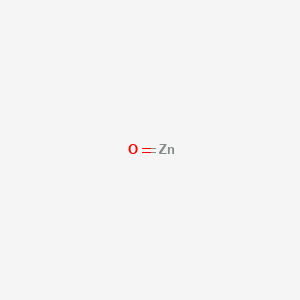几乎可以阻隔掉所有波长的 UVA、UVB,但是因为涂起来会白白且粘粘厚厚的一层,所以限制了它的实用性,因此有些厂商发展出粒子较小的氧化锌分子,即所谓的 Z-Cote,使用上涂在皮肤是透明的,改善了上述的缺失,同时仍可达到防护效果。
研究显示,粒子越小的氧化锌(例如 microfine zinc oxide 或更小的 nano zinc oxide),越有可能被肌肤吸收,间接影响人体细胞,因此也越不安全。

最多用量是多少及
粒子越小越不安全有没有说小过什么SIZE就不安全
想请问一下z-cote的粒子细小程度有去到microfine zinc oxide或nano zinc oxide那么小吗?会不会被皮肤吸收?
thanks!
安全,因为渗不进皮肤,即便渗入也不发生刺激或化学反应 (取自张丽卿 博客分享)
我一直在寻找完美的防晒 能够完整防护紫外线A 质感要自然 好清洗的
最近买了几款纯物理防晒 都是高分比的氧化锌 照理来说 防晒部分是可以很放心
而且现在都作的很细緻 擦起来很舒服 一点都不会死白
但是 可能是因为氧化锌本身收敛的特质 虽然刚擦的时候很滋润
但是 过了一会儿 整个脸像是起鸡皮疙瘩一般 整个脸都很干 还会一粒一粒的 整片浮起来...
害我现在只能去寻找化学性防晒 我本身是混合性偏干性肌肤
是否要油性皮肤才合用? 提供给大家作参考
保養品日文正確表示名稱是"酸化亜鉛","酸化Zn"是簡略的表示名稱
我也开始使用物理性防晒,也觉得用后感觉颇干,之后就尝试用一比一份量混合比较滋润的乳霜再使用,感觉比较好一点,但就不知道会否降低了防晒效果
有一款注明(non-nano)的 Zinc Oxide 是不是就比较安全呢?
防晒剂中的纳米氧化锌,接触人体最主要的途径是皮肤。人体皮肤角质层细胞间隙约为100nm,在某些情况下可变宽,而且毛囊使得皮肤表面积增加,纳米氧化锌在毛囊内的堆积可能成为其进入人体的潜在途径,因此理论上防晒剂中的纳米氧化锌有可能穿透角质层的屏障进入深层活体组织。关于纳米氧化锌的经皮吸收的研究很多,Karsten Schlling等回顾了近10余年间的研究成果,这些研究采用在体试验或离体试验,对纳米氧化锌在无毛小鼠、猪或人体皮肤等各种皮肤模型中的经皮吸收情况进行了探索,并未发现防晒剂中的纳米氧化锌透过皮肤角质层的屏障进入活性细胞中的证据,并认为主要原因是防晒剂中毒纳米氧化锌一般都是以聚合物的形式存在,而非原始的纳米粒子。
然而,这些基于正常皮肤的研究,并不能反应皮肤角质层受损时纳米氧化锌经皮吸收的情况,仍然不能完全打消消费者对其安全性的担忧。因为皮肤晒伤后反复涂抹防晒剂的情况时有发生,而晒伤的皮肤角质层功能受损,渗透能力大大增强,防晒剂的经皮吸收可能增加。皮肤渗透性较高的情况还包括儿童的皮肤、老人的皮肤或身体某些较薄的皮肤等,目前关于纳米氧化锌在受损皮肤或渗透性较高的皮肤的经皮吸收情况鲜见报道,应该是下一步研究的方向。
所以说正常皮肤一般不会吸收纳米氧化锌,但角质层受损的皮肤可能吸收。。
回jjlin103, 我是混合性皮肤,t字位油但两颊是干性皮
我都有用物理性防晒但我不会觉得干
我想最主要是护肤品的关系,如果做好保湿的功夫涂防晒时就不会出现干的问题
我用的物理性防晒是innisfree的eco safety no sebum sun milk
Zinc oxide is an active sunscreen ingredient. This mineral acts as a broad-spectrum UV filter by forming a barrier on the skin. Zinc oxide particles layer on top of the skin surface and help protect the skin by reflecting and scattering both UVA and UVB sunrays away.
Zinc oxide is often recognized for its low potential for irritation and skin sensitization.
Zinc oxide is a fine white powder that is insoluble in water, contributing to its water-resistant properties.
@Omni God. Seriously the most ridiculous comment. Zinc oxide is highly recommended for sensitive skin and oily skin.
为FDA含药成分(取自化妆品禁限用成分管理规定):
防晒、2.0~20.0%(作为收敛剂之用途,限量10%以下)
其他规定:用作化粧品本身之保护剂,而非作为防晒剂且未标示其效能者,得以一般化粧品管理。
主要为附着在皮肤上,遮蔽并反射紫外线。
虽然物理防晒并不像化学防晒会随着光照射减低效果,但粉体仍会因,风、接触、流汗、时间等逐渐脱落,使防晒效果降低,为使粉体较不易脱落,通常产品较为黏腻
即便无运动,仍建议1小时补擦一次
Fast facts
Approved in: United States, Australia, Europe, Japan
Banned in: None
Best for: Sun damage prevention
Coral safe? No
Caution: Certain formulations may leave a white cast for olive and dark skin tones
Zinc oxide is the second GRASE sunscreen ingredient, allowed in concentrations up to 25 percent.
Studies show it’s safe, with no evidenceTrusted Source of skin penetration, even after repeated use. In Europe, the ingredient is labeled with a warning because of its toxicity to aquatic life. The ingredient doesn’t cause harm unless it’s swallowed or inhaled.
Compared to avobenzone and titanium oxide, it’s cited as a photostable, effective, and safe for sensitive skin. On the other hand, research also says it’s not as effective as chemical sunscreens, and isn’t as effective in protecting against sunburn as it is for sun damage.
https://www.healthline.com/health/beauty-skin-care/best-sunscreen-ingredients#zinc-oxide
Mineral sunscreens are made with titanium dioxide and zinc oxide, usually in the form of nanoparticles. The FDA proposed that both titanium dioxide and zinc oxide be classified as safe and effective. Evidence suggests that few if any zinc or titanium particles penetrate the skin to reach living tissues (Gulson, 2012, Sadrieh 2010).
Titanium dioxide and zinc oxide
Titanium dioxide is classified as a possible human carcinogen by the International Agency for Research on Cancer, because of the potential of exposure through inhalation. For this reason, powdered or spray formulations containing titanium dioxide are of concern. Zinc oxide also carries inhalation concerns when used in spray and powder products
In general, mineral sunscreens tend to rate better than chemical sunscreens in the EWG sunscreen database. However, it is important that manufacturers use forms of minerals coated with inert chemicals to reduce photoactivity. To minimize the risks to sunscreen users and maximize these products’ sun protection, EWG supports stronger guidelines and restrictions on the types of used zinc and titanium in sunscreens. Our detailed analysis of nanoparticles in sunscreens is available here.
https://www.ewg.org/sunscreen/report/the-trouble-with-sunscreen-chemicals/
